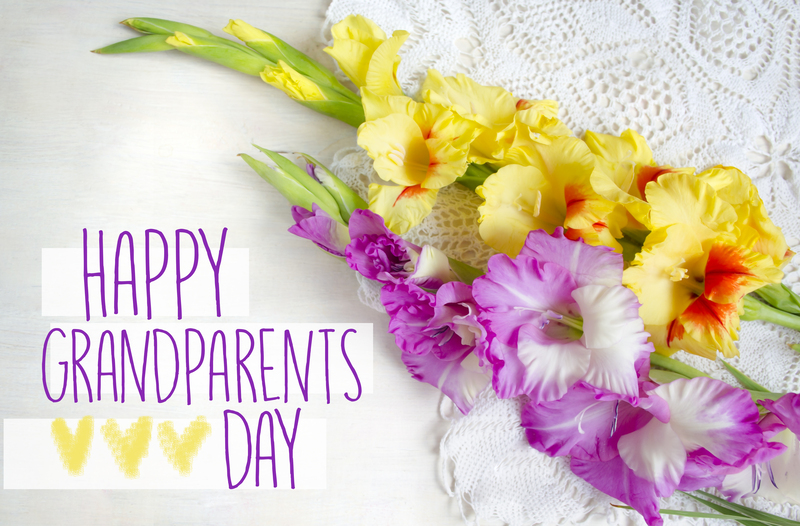Your Path to Beautiful Hydrangeas
Posted on 25/08/2025
Your Path to Beautiful Hydrangeas: A Complete Guide to Stunning Blooms
If you have ever strolled by a garden painted with shades of blue, pink, or white, there's a good chance you've admired the captivating hydrangea shrubs. With their lush, cloud-like flower clusters and eye-catching foliage, these resilient perennials have earned a special place in gardens around the world. Your path to beautiful hydrangeas is just beginning--so let's explore how to grow, maintain, and enjoy these stunning blooms in your own green space.

Why Grow Hydrangeas?
Hydrangeas aren't just any garden plant; they're a statement. Their large, vibrant blossoms can transform a lackluster yard into a showpiece. Here are a few reasons to embrace hydrangea gardening:
- Versatility: They thrive in garden beds, borders, or containers.
- Extended Blooming Season: Most varieties flower from early summer into fall.
- Color Variety: Hydrangeas come in shades of blue, pink, purple, white, and even green.
- Low Maintenance: With the right care, they require little fuss.
- Attract Pollinators: Bees and butterflies love hydrangeas.
It's easy to see why so many gardeners--novice and expert alike--desire gorgeous hydrangea plants for their outdoor spaces.
Understanding Hydrangea Types
There's more than one path to beautiful hydrangeas. In fact, several species offer distinct appearances and care requirements:
Bigleaf Hydrangea (Hydrangea macrophylla)
- Bloom Color: Pink, blue, purple (color can change with soil pH)
- Features: Large, rounded flower heads sometimes called "mopheads" or "lacecaps"
- Best For: Classic garden look, color-changing blooms
Panicled Hydrangea (Hydrangea paniculata)
- Bloom Color: White turning pink, green, or red as the season progresses
- Features: Cone-shaped flower clusters; very winter-hardy and sun-tolerant
- Best For: Colder climates, sunny gardens
Smooth Hydrangea (Hydrangea arborescens)
- Bloom Color: Usually white ("Annabelle," for example, is famous)
- Features: Rounded blooms; adapts to a range of conditions
- Best For: Low-maintenance landscapes
Oakleaf Hydrangea (Hydrangea quercifolia)
- Bloom Color: White, turning pink with age
- Features: Unique foliage resembling oak leaves; fall color interest
- Best For: Woodland and shade gardens
*There are also climbing hydrangeas and rarer types, but the above will cover most paths to achieving lush hydrangea blooms in your landscape.*
Your Step-by-Step Plan for Gorgeous Hydrangeas
1. Choosing the Right Location
Location can define your success with hydrangeas. Choose a spot that gets:
- Morning sun and afternoon shade for bigleaf and oakleaf hydrangeas
- More sun (at least 4-6 hours) for panicle and smooth types
Avoid full, harsh afternoon sun with bigleaf varieties, as it can scorch the leaves. Well-drained, fertile soil is a must--hydrangeas dislike soggy ground!
2. Preparing the Soil for Healthy Growth
Soil preparation is fundamental along your path to beautiful hydrangeas. Amend your garden bed with:
- Organic compost for nutrients and moisture retention
- Peat moss or leaf mold to improve drainage and acidity
Use a soil test kit to check pH levels. Hydrangea color can be influenced by soil pH--more on that in a moment!
3. Planting Hydrangeas
- Dig a hole roughly twice the width of the plant's root ball and the same depth.
- Gently loosen the roots if they're bound or tangled.
- Position your hydrangea so the top of the root ball sits level with the surrounding soil.
- Backfill with amended soil, firming gently as you go.
- Water thoroughly, soaking the area.
- Mulch around the base for moisture and weed control.
Caring for Your Hydrangeas: Secrets to Lasting Beauty
Watering Essentials
Hydrangeas love water--after all, "hydra" is Greek for water! Water deeply at least once a week during dry spells. Morning is best, and aim at the base, not the leaves.
- Bigleaf and smooth hydrangeas may need more frequent watering in hot or windy weather.
- Mulch conserves soil moisture and protects roots.
Fertilizing Hydrangeas for Vivid Blooms
Nutrient-rich soil equals spectacular flowers! Apply a balanced, slow-release fertilizer in early spring for most hydrangeas. Avoid heavy feeding later in the growing season, as it can affect the next year's blooms.
- For bigleaf hydrangeas, use a fertilizer formulated for acid-loving plants to enhance blue shades.
- Too much nitrogen can produce lush foliage but fewer flowers--so moderation is key!
The Magic of Hydrangea Flower Color
One of the most amazing features of hydrangeas, especially Hydrangea macrophylla, is their transformative color range. Here's how you can influence bloom color:
- Blue Hydrangeas: Lower soil pH (acidic, below 6.0) with garden sulfur or aluminum sulfate.
- Pink Hydrangeas: Increase soil pH (alkaline, above 7.0) with garden lime.
*White hydrangeas stay white, no matter the soil pH!*
Test your soil annually and adjust gradually for the healthiest plants. Never over-apply soil amendments; start small and monitor results season-by-season.
Pruning Hydrangeas: When and How
Proper pruning is critical along your path to beautiful hydrangea bushes.
Bigleaf and Oakleaf Hydrangeas
Bloom on old wood (last year's stems)--prune just after flowering. Remove spent blooms, dead stems, and shape as needed.
Panicle and Smooth Hydrangeas
Bloom on new wood--prune late winter or early spring. Cut stems back to desired shape or about 12-18 inches above the ground.
*Avoid heavy pruning in autumn, as it can reduce flowering next season.*
Hydrangea Winter Care
Defend your dreams of vibrant hydrangea flowers by preparing for winter:
- In colder zones (USDA 4-6), mulch thickly around the root zone with leaves or straw.
- Wrap the shrub in burlap for extra protection if you have harsh winds or heavy snow.
- Trim only deadwood in late winter; wait for new buds to appear before removing frost-damaged stems.
Common Hydrangea Challenges (and Solutions!)
As you walk your path to beautiful hydrangea blooms, you might meet a few obstacles. Here's how to overcome them:
- Wilting Leaves: Usually caused by underwatering or transplant stress. Deep water and mulch help roots recover.
- No Blooms: Pruning at the wrong time, late frosts, or excess nitrogen fertilizer are common culprits. Review your care routine and adjust as needed.
- Yellowing Leaves: Often a sign of poor drainage or chlorosis (iron deficiency). Amend soil and ensure roots aren't waterlogged.
- Pests and Diseases: Keep foliage dry, remove fallen leaves, and treat with organic sprays if necessary. Hydrangeas are generally resilient when well cared for.
Enhancing Your Garden Design with Hydrangeas
Hydrangeas don't merely brighten borders--they're a foundation for breath-taking garden design.
Design Ideas with Hydrangeas
- Mixed Borders: Pair hydrangeas with hostas, ferns, and astilbes for a lush, layered look.
- Container Gardens: Dwarf varieties thrive in pots on patios and balconies. Use high-quality potting soil and monitor watering.
- Hedges and Screens: Plant in a row for privacy or to line a pathway--panicle hydrangeas work especially well.
- Cut Flower Arrangements: Hydrangeas have long vase life; cut stems early in the morning for longest-lasting bouquets.
Hydrangea Myths, Legends, and Fun Facts
- Symbolism: Hydrangeas are associated with gratitude, heartfelt emotion, and abundance in the language of flowers.
- Origins: Native to Asia and the Americas, hydrangeas have been cultivated for centuries.
- Quick Drying: Flowers can be dried and preserved for long-lasting arrangements. Hang upside down in a cool, dark place for best results!
- Allergy-Friendly: Hydrangea pollen is sticky, making them less likely to trigger allergies compared to wind-pollinated plants.

Frequently Asked Questions About Hydrangeas
-
What is the best time to plant hydrangeas?
Spring or fall is ideal--when weather is mild and roots have time to establish before extremes of heat or cold. -
Can I grow hydrangeas in pots?
Absolutely! Choose compact varieties, a large container with drainage holes, and use well-draining potting mix. Water and feed regularly. -
How do I keep my hydrangeas blooming year after year?
Proper pruning, feeding, and watering, along with mulch and protection from extreme weather, are the secrets to perennial success. -
Are hydrangeas toxic to pets?
Some parts--especially the leaves and buds--are mildly toxic if eaten in large quantities. Keep curious pets from nibbling them! -
Why do my hydrangea flowers sometimes turn green?
It's normal as blooms age or if nights are very warm. Some varieties naturally have green-tinted flowers as part of their cycle.
Walking Your Path to Beautiful Hydrangeas: Final Tips
- Select the right hydrangea variety for your climate and garden conditions.
- Site wisely--shield from afternoon sun and strong winds.
- Prepare soil before planting and adjust pH for color preference.
- Water consistently, especially in the first year.
- Mulch and fertilize for lush, healthy growth.
- Follow the right pruning schedule for your hydrangea species.
With the right approach, patience, and a little know-how, you'll enjoy a garden brimming with spectacular hydrangea blooms for years to come. Every season, as clusters of color burst to life, you'll look back with pride on your gardening journey. Now is the perfect time to begin your path to beautiful hydrangeas--happy growing!
Latest Posts
Your Path to Beautiful Hydrangeas
Captivating and Enduring: Top 12 Long-Lasting Flowers
Nature's Echo: Identifying Your Personality Flower







